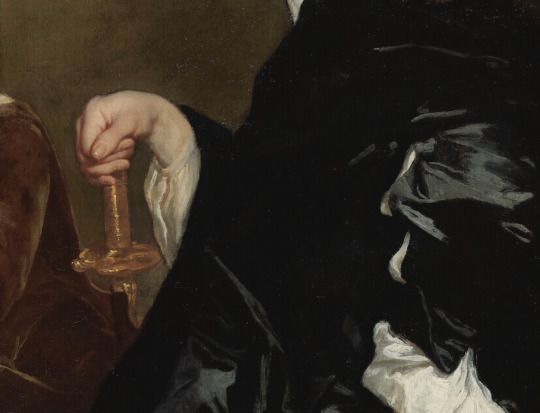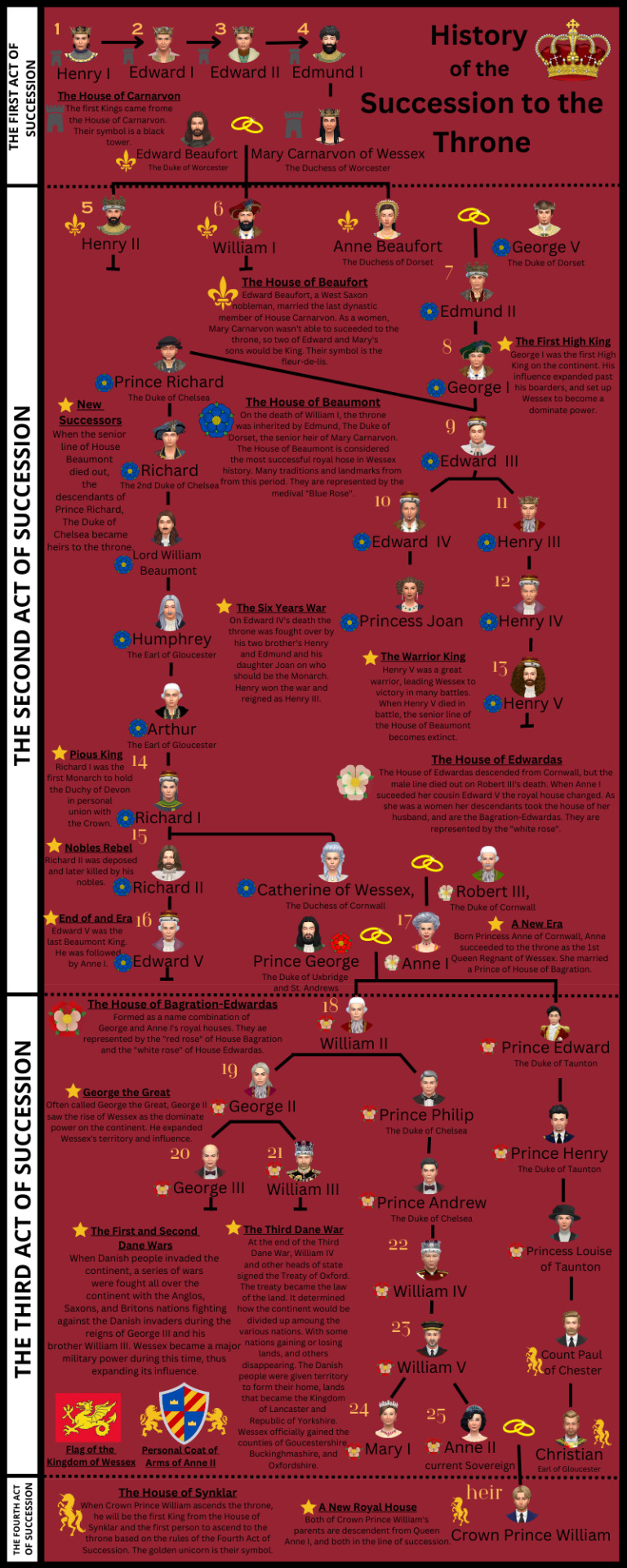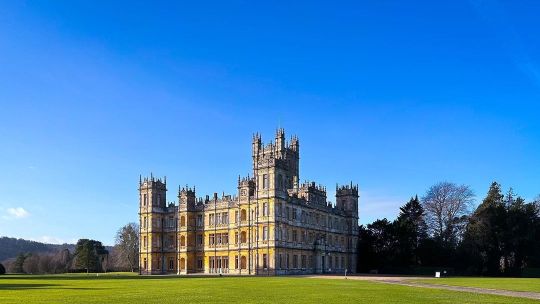#earl of carnarvon
Explore tagged Tumblr posts
Text
You know I wrote out that whole crossover/intersection between the mummy and Indiana Jones once but it just occurred to me there’s another property that would also fit in.
Downton Abbey.
Because as we all know Highclere Castle, the stunning home that serves as Downton in the show is/was owned by descendants of Lord Carnarvon, who, in addition to being one of the primary financiers of Howard Carter’s expedition into Egypt whence the discovery of King Tut’s tomb, was also one of the primary inspirations for Evy and Jonathan Carnahan’s father (and in fact in earlier drafts of the script to the Mummy, their surname was Carnarvon).
So like, imagine it. Jonathan’s quite some years older than Evy, old enough that he’d have been Of Age in 1912 when the Titanic sank, and he’s been off in Egypt with his father and stepmother and baby sister but his father’s recently died, and then gets the letter from a distant cousin, a Robert Crawley, Earl of Grantham, that he’s now the heir to the estate.
And besides I think Evy and Sybil would get along splendidly
#George Herbert fifth Earl of Carnarvon actually had a daughter named Evelyn#maybe Jonathan’s presumed dead for a while during the war#and it happens that Matthew was wounded and as an officer is sent to convalesce at downton#and meets mary#evy though a few years younger than sibyl is her absolute ally with regards to Tom#and sibyl and Tom are her staunch advocates when she brings back an American wastrel from the desert#whilst cousin Robert has an ulcer about more Americans — and this one irish at that — coming into the family#in this au also sibyl and Matthew both live if that wasn’t clear#I think ive spelled sibyl inside out everywhere in this post#oh well#Downton abbey#the mummy
45 notes
·
View notes
Text

Peter Lely, The Carnarvon Family: Group portrait of Charles Dormer, 2nd Earl of Carnarvon (1632-1709), his wife Elizabeth, née the Hon. Elizabeth Capel (1633-1678), and their children Charles, Viscount Ascott (1652-before 1673) and Elizabeth, later Elizabeth Stanhope, Countess of Chesterfield (1653-1677) (detail), 17th century. Oil on canvas, 156.2 x 217.8 cm. Private Collection.
37 notes
·
View notes
Text
At first I could see nothing...but presently, as my eyes grew accustomed to the light, details of the room within emerged slowly from the mist, strange animals, statues and gold -- everywhere the glint of gold. -Howard Carter, The Tomb of Tutankhamen: Discovered by the Late Earl Carnarvon and Howard Carter, 1923
8 notes
·
View notes
Text

The History of the Succession to the Crown shows the historical succession to the throne of Wessex starting with the 1st monarch to rule from the throne, King Henry I of Wessex, at the top of the chart leading to the current sovereign Queen Anne II of Wessex at “25″ at the bottom.
The symbol/flower next to an individual is which royal house they belong to. There is also a brief description about each house that has ruled Wessex.
Note this chart only shows how each monarch is related to each other and their descent from Henry I of Wessex, not necessarily an entire family tree or the current line of succession.
The First Act of Succession
The First Act of Succession was established when Henry Carnarvon became the first King of a sovereign Wessex after the fall of the Saxon Empire. HE declared that the throne will pass through his male line, and it successfully passed from father to son until his great-grandson King Edmund I failed to produce a living male heir. When King Edmund I realized that there wouldn’t be any male heirs left, he signed the Enfield Declaration which declared the throne would pass the heirs daughter, Princess Mary Carnarvon of Wessex.
The Second Act of Succession
When Mary Carnarvon gave birth to her son, the future King Henry II of Wessex, The Second Act of Succession was officially passed, declaring that all possible claimants to the throne must descend from Princess Mary. Mary and her husband Edward Beaufort, The Duke of Worcester would go on to have five children, but only her youngest daughter Anne who married The Duke of Dorset would have any children to ascend to the throne.
The throne then passed to Anne’s son King Edmund II and passed neatly from father to son, until the death of Edward IV of Wessex. Edward IV has no male children, but he did have a daughter. Some nobles thought that Princess Joan (Edward IV daughter) was the rightful successor, while others thought that Edward IV’s brother Prince Henry, The Duke of Worcester was the more suitable heir.
Those who supported Princess Joan of Wessex argued that the Second Act of Succession referred to “heirs general” and as the senior heir of Princess Mary Carnarvon, and it didn’t matter that she was female. Those for Prince Henry, The Duke of Worcester argued that the Second Act of Succession only referred to heirs male and would only allow for a female succession if the male line of Princess Mary Carnarvon goes extinct. Henry’s supporters won and the throne then passed to Edward IV’s brother, who reigned as King Henry III of Wessex.
It wasn’t until Princess Anne of Cornwall ascended the throne as Queen Anne I of Wessex that Wessex got its first female consort.
The Third Act of Succession
On her accession, Queen Anne I decided to limit the possible heirs to the throne to only her descendants, thus ending any claims of other West-Saxon nobleman who descended from House of Beaumont, and wished to challenge her for the throne. All subsequent monarchs under the Third Act, and later Fourth Act of Succession, must descend from Queen Anne I and her husband Prince George Bagration to be eligible to the throne.
The Fourth Act of Succession
The Fourth Act of Succession is the current Act governing the succession to the throne. It has three basic rules. 1) an individual must be a descendant of Anne I through one of her five legitimate children, 2) members of the occult are banned from inheriting the throne, 3) and the line of succession follows male preference primogeniture.
Succession to the Crown Chart | Princess Royal Chart | Counsellors of the State | The Earl of Gloucester |
26 notes
·
View notes
Text
In light of all the horrid stuff going on in this country lately, I would just like to remind everyone that england isn’t a totally terrible place!!
This country is full of beautiful architecture, art, literature, and natural beauties that are sometimes hard to believe are real.

This is the Major Oak of Sherwood Forest, and is estimated to be as much as 1100 years old!! It is estimated at 23 tons, and is 33 feet in girth/10 metres. According to local folklore, it is the tree where Robin Hood and his merry men slept when in the forest.

This is Durdle Door, in Dorset. It’s a natural limestone formation on the jurrassic coast, which was deemed “of such international geographic importance” that it was England’s first foray natural World Heritage site with UNESCO in 2001, joining the Grand Canyon and the Great Barrier Reef (visit-dorset.com)
As for architecture, we have the iconic Highclere Castle

Most well known for its use in iconic historical drama Downton Abbey, first written records of the Highclere estate date back to the year 749 when the estate was granted to the bishops of Winchester. In the late 14th century the bishop of Winchester William of Wykeham built himself a palace on the property, and was taken by Edward VI during the reformation in 1551. It was then granted to the Fitzwilliam family, rebuilt in 1679 by then owner Sir Robert Sawyer, who then bequeathed it to his daughter Margaret, first wife to the 8th earl of Pembroke, Thomas herbert, and it remains in the hands of the Herbert family to date, albeit the branch that resulted in the current Earl of Carnarvon. It was redesigned in the years 1842-49 to the facade we know today. (Quick side note, I am directly related to the herbert family through my great grandfather, so carnarvon I’m coming for you watch out)
We also have of course, the ever iconic Chatsworth house

IYKYK. Jk this incredible house is most well known for its use as Pemberley, the Derbyshire residence of Mr Darcy in the 2005 production of Pride and Prejudice (the best film ever made thank you very much).
The Manor of Chetesuorde is listed in the Domesday Book of 1086 as property of the crown in the custody of William de Peverel. Chatsworth ceased to be a large estate until the 15th century when it was purchased by the Leche family. They enclosed the first park and built a house on what is now the south east part of the gardens. The lands were sold in 1549 to Sir William Cavendish, husband of Bess of Hardwick (who was the “keeper” of Mary Queen of Scots while imprisoned. Also apparently her grandson married ANOTHER of my ancestors so I’m related to her too?? What the fuck I need to stop learning family history on the fly). Bess began to build her own home on the property from 1553 to the 1560s.
The home was renovated a truly mindboggling amount of times, as is the amount of times it changed hands. So I’ll keep it simple. A great number of important changes were made by the 4th duke of Devonshire, greatly changing the layout of the home. His son would marry Georgiana Spencer, 4 times great aunt of princess Diana (and YET ANOTHER RELATIVE OF MINE! From another branch of the family!! I need to call my mother. And update my ancestry.com).
In 1811 the 6th duke of Devonshire inherited Chatsworth, and proceeded to transform it into the wonderful beacon of regency romance we know and adore today over the course of his stewardship over the property.
These are only four incredible natural and historical landmarks in England. There are so many more that I could spend 3 life times researching!! (And so many more that have nothing to do with my family history, I promise. Swear I wasn’t doing this on purpose lmao)
This country can be a fucking nightmare, but it’s also a beautiful country with incredible sights and history, and I think we do ourselves a disservice when we forget that. It’s okay to love England (I fucking adore this country you have no idea, wouldn’t be running a blog if I didn’t!), you aren’t a bad person or supporting the bad shit we’ve done if you are proud of being English.
Because don’t get me wrong this country has perpetrated some of the worst shit in history, but we’ve also contributed some of the most important literature and scientific discoveries ever!!
Mary Anning revolutionised the field of paleontology!! Mary Shelley started the entire sci fi genre. Steven hawkin, Charles Darwin, Dorothy Hodgkin and Rosalind franklin discovered DNA! Isaac Newton, William Blake, John Keats, Byron, Alan Turing, Branwell, Charlotte, Emily, and Anne bronte, Dante Gabriel Rossetti, John Everett Millais, John William Waterhouse, to name a few merely off the top of my head!
England can be a wonderful place, and our heritage can be incredible and a legacy to be truly proud of. It would not do to forget, however, that a lot of our history would not have been possible without queer and ethnic minority groups. We all know a good deal of English wealth came from the slave trade, female scientists and artists often had credit for their work stripped from them and given to husbands or even strangers, and a good number of our most influential scientists and artists were very notably queer who were treated incredibly poorly and sometimes killed, and these are facts that can and do exist simultaneously.
Our heritage is wonderful, but it is still being made today. Things that we do now will be landmark events for our descendants, and it is our duty to do better for this country than our ancestors.
#long ass post sorry#I’m In A Mood today#apologies for the absolutely bizarre turn into my family history I genuinely did not expect to be related to like everyone involved in this#i severely underestimated how intertwined the nobility is#I would love to chat with anyone about some fascinating bits of English history they know and am happy to elaborate on anything I possibly#can!#politics#english history#chatsworth house#highclere castle#dorset#sherwood forest#english culture#trans rights#durdle door#can’t tag everything or I’ll be here all day#Admin Roe
51 notes
·
View notes
Text

On this day:
MOSQUITO EXECUTES CURSE: LORD CARNARVON
On April 5, 1923, Lord Carnarvon, financial backer of the Howard Carter expedition that uncovered the treasure of Tutankhamen, died of an infected mosquito bite on his left cheek. By strange coincidence, doctors who later examined Tutankhamen's mummy reported finding a scablike depression on its left cheek. The curse of the pharaoh was blamed for Carnavon's death.
Lord Carnarvon had entered the pharaoh's undisturbed burial chamber the previous November. Shortly after the tomb's official opening the following February, Lord Carnarvon fell ill in Cairo. In March he entered the hospital for treatment of the infected mosquito bite. Weakened by blood poisoning, he contracted pneumonia. During his final illness, a delirious Carnarvon had muttered many times, "A bird is scratching my face." When he died in a Cairo hotel at 1:55 a.m., all the city lights went out. At the precise moment of his passing, at Highclere Castle, Carnarvon's estate in England, his fox terrier howled and died.
The curse was also blamed for the deaths of several others who had visited the tomb. Carnarvon's half brother, Aubrey Herbert, died of peritonitis. In 1923, George Jay Gould, an American railway tycoon and millionaire, died suddenly of a fever in France after visiting the tomb. A Canadian friend of Carter's, Professor M. Laffleur, developed a fever and died the day after his first visit to the tomb in 1924. Carter's assistant, A. C. Mace, also died prematurely.
Text from: Almanac of the Infamous, the Incredible, and the Ignored by Juanita Rose Violins, published by Weiser Books, 2009
2 notes
·
View notes
Photo

Interesting and enjoyable guided tour around Downton Abbey, aka Highclere Castle, this morning… • • #downtonabbey #highclerecastle #highclere #castle #hampshire #tv #television #julianfellowes #drama #history #historical #historic #countryhouse #victorian #capabilitybrown #charlesbarry #bathstone #jacobethan #renaissance #carnarvon #highclerepark #listed #listedbuilding #earl #statelyhome (at Highclere Castle) https://www.instagram.com/p/CoIJYpOIZKb/?igshid=NGJjMDIxMWI=
#downtonabbey#highclerecastle#highclere#castle#hampshire#tv#television#julianfellowes#drama#history#historical#historic#countryhouse#victorian#capabilitybrown#charlesbarry#bathstone#jacobethan#renaissance#carnarvon#highclerepark#listed#listedbuilding#earl#statelyhome
2 notes
·
View notes
Text

Mary Capel (1630–1715), Later Duchess of Beaufort, and Her Sister Elizabeth (1633–1678), Countess of Carnarvon
Artist: Sir Peter Lely (Pieter van der Faes) (British, 1618–1680)
Date: 1731
Medium: Oil on Canvas
Collection: The Metropolitan Museum of Art, New York City, NY, United States
Description
Mary and Elizabeth Capel were the sisters of Arthur Capel (1632–1693), first Earl of Essex, who rebuilt and enlarged the house and gardens of the family seat, Cassiobury Park, beginning in 1677. This picture was installed at that time in the library along with other family portraits, eight by Lely, which remained in place until 1922, when the house and its contents were sold. Two more of those portraits are now in the Museum's collection: Sir Henry Capel by Lely (39.65.6) and George Capel, Viscount Malden, and Lady Elizabeth Capel by Reynolds (48.181).
Mary's first marriage was in 1648 to Henry Seymour, Lord Beauchamp, who died in 1654. In 1657 she married Henry Somerset, Lord Herbert. This portrait may have been painted on the occasion of her second marriage, when she would have been twenty-seven. Lord Herbert succeeded as third Marquess of Worcester in 1667 and was created Duke of Beaufort in 1682. The couple devoted themselves to enlarging Badminton House, his family estate in Gloucestershire, and to developing extensive walks and formal gardens modeled on those at Versailles. The duchess was especially interested in botany and propagated exotic plants. Her younger sister Elizabeth married Charles Dormer, second Earl of Carnarvon, in or before 1653. She was an amateur artist, and Lely shows her with a small picture of her own, a study of a tulip inscribed with her name under a coronet (Whinney and Millar 1957 and Millar 1963).
#portrait#oil on canvas#peter lely#sisters#women#countess#duchess#indoors#seated#british painter#nobility#18th century#british#costume#art#drapes
1 note
·
View note
Text


hauntedbystorytelling
view on wordpress
George Herbert, 5th Earl of Carnarvon ~ The Frieze. Photograms of the Year (1917-1918) | src internet archive
related post Source: unregardoblique.com
0 notes
Text
Robert Herbert came to Queensland as Bowen's secretary but emerged after the elections of April 1860 as leader of his government – effectively the Premier, though he called himself Colonial Secretary. The twenty-eight-year-old grandson of the Earl of Carnarvon, educated at Eton and Oxford, appointed his lover John Bramston to the Legislative Council.

"Killing for Country: A Family History" - David Marr
#book quotes#killing for country#david marr#nonfiction#robert herbert#qld#queensland#australia#george bowen#secretary#election#april#60s#1860s#19th century#earl of carnarvon#henry herbert#educated#eton college#oxford university#lover#john bramston#legislative council#nepotism#australian history#gay#gay history#lgbt history
1 note
·
View note
Text
What Was So Special About the Tomb of Tutankhamun?

Tutankhamun's funerary mask, courtesy of Wikipedia
The tomb of Tutankhamun, a New Kingdom pharaoh from the Eighteenth Dynasty of Egypt, was rediscovered in 1922 by a team of early Egyptologists led by Howard Carter and financed by George Herbert, the 5th Earl of Carnarvon. This tomb, also known by its official designation of KV62, is famous worldwide, although the ruler buried in the tomb was, at most, a historical footnote. So why, exactly, is the tomb so famous when the inhabitant was not?
When KV62 was rediscovered, the tomb still contained the vast majority of the funerary objects that were traditionally buried with the ultra wealthy and powerful in ancient Egypt. This provided unprecedented insight into the act of royal burials because of the fact that the majority of other tombs in the Valley of the Kings, and in ancient Egyptian history in general, were extensively grave-robbed in ancient times.
There are several possible reasons why Tutankhamun's tomb remained undisturbed for so long. One explanation is that a flash flood deposited a thick layer of alluvium, a deposit of loose clay, silt, sand, and gravel, that covered the entrance to the tomb. Another explanation is that debris from the excavation of KV9, the tomb of Ramesses V and Ramesses VI, was disposed of by heaping it onto KV62, thereby burying the entrance to the tomb.
Objects that were found inside of KV62 included several hundred shabtis (clay figurines created to do work for the inhabitant of the tomb in the afterlife), pieces of jewelry, a wooden bust of Tutankhamun, two life-sized statues of the pharaoh that guarded the entrance to the actual burial chamber, and a golden funerary mask, which is one of the most recognizable artifacts from Egypt. In all, the excavators discovered over 5,000 objects in the tomb.
An interesting fact that a lot of discussions around KV62 leave out is that there actually is evidence that the tomb was robbed twice in antiquity, the first time just shortly after the tomb was sealed and the second time likely years down the line, but within living memory of the pharaoh himself. This is based on evidence of the tomb receiving significant restoration after both incursions. However, the sheer amount of grave goods that were found in 1922 indicate that these ancient grave robbers did not make off with very many items from the tomb.
1 note
·
View note
Text

Peter Lely, The Carnarvon Family: Group portrait of Charles Dormer, 2nd Earl of Carnarvon (1632-1709), his wife Elizabeth, née the Hon. Elizabeth Capel (1633-1678), and their children Charles, Viscount Ascott (1652-before 1673) and Elizabeth, later Elizabeth Stanhope, Countess of Chesterfield (1653-1677) (detail), 17th century. Oil on canvas, 156.2 x 217.8 cm. Private Collection.
28 notes
·
View notes
Text
Totally Random Non-Fiction Tuesday

Ooh, there were 16 pages of color pictures! Woo…. oh, and the book was great too.
It’s not about this or that particular find in Egypt or in Archeology, but, instead, it’s about the British, French, Germans, and Americans, and those four countries’ archeologists (and “archeologists”) in a race to find the treasures of Egypt (and, oof, a lot of the time, also, bring them back to those countries).
It was interesting to read about the variety of motives for those who went to Egypt to find these things, not to mention all the ways that their exploration changed Egypt also.
You may like this book If you Liked: The Riddle of the Rosetta by Jed Buchwald, The Earl and the Pharaoh by Fiona Carnarvon, or The Millionaire and the Mummies by John M. Adams
A World Beneath the Sands: The Golden Age of Egyptology by Toby Wilkinson
#totallyrandomnonfictuesday#nmlRA#nevins memorial library#a world beneath the sands the golden age of egyptology#a world beneath the sands#toby wilkinson
1 note
·
View note
Text
Funeral of Queen Caroline

The private funeral of Caroline, The Queen Mother was held today inside Carnarvon Chapel the Chapel Royal located on the westside of Fogmorre Castle. While press and news cameras were not permitted inside the Castle during the service, the Royal Family did release official photographs to mark the occasion.


Her Majesty Queen Anne II and her husband His Royal Highness The Earl of Gloucester were seated front row along with their sons Their Royal Highnesses The Crown Prince William and The Prince George of Wessex. His Royal Highness The Duke of Uxbridge joined the senior royals in the front row during the remembrance service.
In the second row of the royal section were Her Royal Highness Princess Alexandra of Uxbridge and His Highness The Earl of Falmouth.


There was much surprise, when it was confirmed that the children of Her Highness Princess Alexandra were seated with members of the Royal Family in the second row next to their parents and uncle. Pictured Above Left to Right: HH The Countess of Hyannis ; The Earl of Hyannis ; David Worcester-Scott ; Lady Beatrice Worcester-Scott ; Lady Charlotte Worcester-Scott.

The seats of honor, positioned directly right of the Royal Family were given to distinguish and representatives of the late Queen’s various Charites. The fiancé of The Duke of Worcester wowed crowds in her dress. The two are set to marry in the society wedding of the season later this spring.
Pictured Above (left to right): Christina St. Andrews, The Dowager Duchess of Worcester ; Edward St. Andrews, The 8th Duke of Worcester ; Miss Diana Berhringer ; HRH Princess Paul of Essex ; HRH Prince Paul of Essex.

Pictured Above Left to Right: Octavian St. Andrews ; Lord Edmund Hamilton-Seymour ; Lady Davina Hamilton-Seymour ; Lady Anne Cornwallis, The Countess of Somerville ; James Cornwallis, The Earl of Somerville
Other notable guests included HRH Prince Thomas of East Anglia, representing the late Queen’s country of birth and members of other reigning and non-reigning royal families with ties to Wessex.
#sims 4 royalty#sims 4 royal simblr#sims 4 royals#sims royal family#sims royal story#sims 4 royal#sims 4 royal family#sims royalty
4 notes
·
View notes
Text

apparently after they desecrated this tomb they died. yes both. somefolks don't believe in FAFO, so they did
Graverobbers
youtube
Defying the curse that has haunted their family for three generations, a member of the Carnarvon family returns to the site of Tutankhamun’s tomb for the first time in 75 years. In 1922 the fifth Earl of Carnarvon died from an infected mosquito bite just weeks after discovering the tomb.
From that day the family name became synonymous with the curse of the Pharoahs. Lord Porchester, Carnarvon’s great-grandson, defies the hex and returns to supervise an excavation in Thebes. This is the story of the mild-mannered aristocrat’s exploration of his family history. It is also the story of the dig and the discovery of a burial chamber with the last remains of Sennerferi, a high official at the Pharoah’s court.
0 notes
